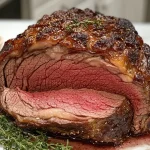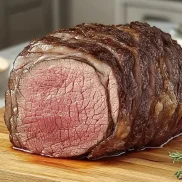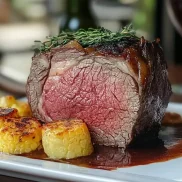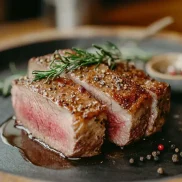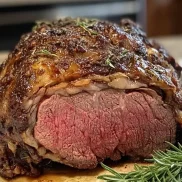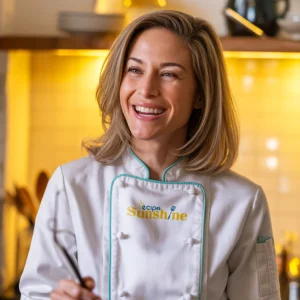What is the 500 rule for prime rib? This cooking method is easier than you think, delivering perfect results with minimal effort. This method combines high-temperature cooking and precise timing to achieve tender, juicy results with minimal effort. For those seeking a detailed boneless prime rib recipe, check out this guide.
The 500 rule is as straightforward as it is effective. By cooking the prime rib at 500 degrees Fahrenheit for a specific duration based on its weight, followed by allowing it to rest in the oven, this method delivers consistent results every time. With a focus on the science of high-heat cooking, the 500 rule transforms a potentially intimidating dish into something anyone can master.
Table of Contents
What Is the 500 Rule for Prime Rib? Understanding the Basics
The 500 rule is a simple yet effective method for cooking prime rib, designed to streamline the process without sacrificing quality. The concept revolves around cooking the roast at a high temperature of 500 degrees Fahrenheit for a specific amount of time based on its weight. Typically, the rule recommends cooking the prime rib for 5 minutes per pound. Once the initial cooking time is complete, the oven is turned off, and the roast remains inside to continue cooking with residual heat for two hours.
This method eliminates the need for constant monitoring or basting, allowing the natural flavors of the beef to shine. It’s particularly appealing for home cooks who want to deliver restaurant-quality results without the stress. The 500 rule also ensures an even cook from edge to center, providing a beautiful medium-rare finish that’s perfect for prime rib lovers.
While the method is straightforward, there are a few essential considerations. First, it’s crucial to use a reliable meat thermometer to check the internal temperature, ensuring food safety and precision. Second, you’ll need an oven that retains heat well and remains unopened during the resting period. These factors play a significant role in the success of the 500 rule.
Origins and History of the 500 Rule
The 500 rule has an intriguing history that’s rooted in the practicalities of home cooking. It’s believed to have emerged as a simplified technique to replicate the results of professional kitchens without the need for specialized equipment. The method gained popularity through word of mouth and online cooking forums, where enthusiastic home cooks shared their success stories.
While its exact origins are unclear, the 500 rule’s appeal lies in its accessibility and consistency. Traditional methods for cooking prime rib often involve complex steps, such as searing, roasting, and constant temperature adjustments. The 500 rule simplifies this process, making it approachable for beginners while still delivering impressive results.
Over time, chefs and culinary enthusiasts have refined the method, adapting it to suit various ovens and preferences. Today, it’s celebrated as a reliable and foolproof way to prepare prime rib, whether for a holiday feast or an intimate dinner.
Why the 500 Rule Works for Prime Rib
The 500 rule’s success lies in its combination of high heat and residual cooking. The initial blast of heat at 500 degrees Fahrenheit creates a flavorful crust by caramelizing the surface of the meat. This process, known as the Maillard reaction, enhances the prime rib’s rich, savory flavor while sealing in its natural juices.
As the oven cools, the residual heat gently cooks the interior of the roast to perfection. This gradual cooking process minimizes the risk of overcooking and ensures an even doneness throughout. Unlike traditional methods that can result in unevenly cooked meat, the 500 rule achieves a harmonious balance between the crusty exterior and tender interior.
Additionally, the resting period within the oven allows the juices to redistribute throughout the meat, enhancing its tenderness and flavor. This step is crucial for achieving the melt-in-your-mouth texture that prime rib is known for.
The Science Behind High-Heat Cooking
High-heat cooking methods, like the 500 rule, are rooted in culinary science. When exposed to high temperatures, the proteins and sugars on the surface of the meat undergo the Maillard reaction, creating complex flavors and an appetizing crust. This reaction is a hallmark of well-cooked meats, contributing to the prime rib’s signature taste and appearance.
Moreover, high-heat cooking helps render the fat in the prime rib, which bastes the meat from the inside as it melts. This self-basting effect adds richness and depth to the flavor profile. Combined with the residual cooking, this method ensures that every bite is juicy and satisfying.
However, achieving these results requires precision and control. The oven’s ability to maintain consistent heat and the cook’s adherence to timing are critical to the 500 rule’s success. By understanding the science behind this technique, cooks can approach it with confidence and predictably excellent outcomes.
Prime Rib: A Cut Above the Rest
Prime rib, also known as a standing rib roast, is a premium cut of beef prized for its tenderness, marbling, and flavor. This cut is taken from the primal rib section of the cow, which is known for its rich fat content and juicy texture. Its luxurious quality makes it a centerpiece dish for special occasions, from holiday dinners to celebratory gatherings.
What sets prime rib apart is its balance of lean meat and marbled fat. The fat not only contributes to the flavor but also helps keep the meat moist during cooking. This is especially important when using high-heat methods like the 500 rule, as the fat acts as a natural insulator, preventing the meat from drying out.
When selecting a prime rib, factors such as grade, size, and bone structure come into play. USDA Prime grade beef offers the highest quality, with abundant marbling and exceptional flavor. Bone-in cuts are often preferred for their added flavor and even cooking, while boneless options are prized for their ease of carving.
By understanding the unique qualities of prime rib, cooks can appreciate why the 500 rule is perfectly suited to this cut. The method highlights its natural flavors and textures, making it a standout dish that’s sure to impress.
How to Prepare Prime Rib Using the 500 Rule
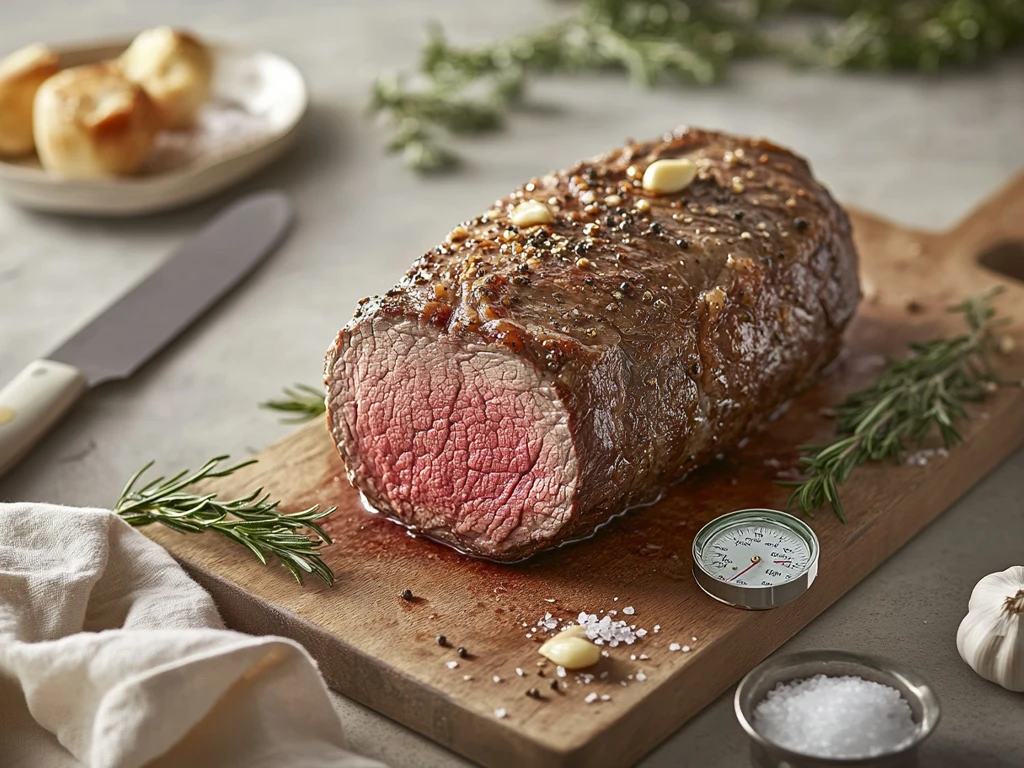
The 500 rule simplifies the art of cooking prime rib, delivering consistent results that are sure to impress. This method revolves around selecting the right cut, mastering the step-by-step process, and knowing how to enhance the flavors with seasonings and marinades. By understanding the nuances of this technique, you can confidently create a show-stopping centerpiece for any occasion.
Selecting the Right Cut for Perfect Results
Choosing the ideal cut of prime rib is the foundation of a successful dish. Prime rib, also known as a standing rib roast, comes in various grades, sizes, and bone structures, each influencing the final outcome.
Start with a USDA Prime grade roast, as it offers the highest quality with abundant marbling for enhanced flavor and tenderness. If Prime grade isn’t available, USDA Choice is a good alternative, providing a balance of quality and affordability. Bone-in cuts are preferred for their ability to insulate the meat, ensuring even cooking and deeper flavor. However, boneless options are easier to carve and still yield excellent results when cooked properly.
When determining the size of your roast, plan for about one pound of meat per person. This ensures generous servings and accommodates the loss of moisture during cooking. Don’t forget to ask your butcher to trim excess fat, leaving a thin layer for self-basting during the cooking process.
Step-by-Step Instructions for the 500 Rule
The 500 rule is straightforward but requires precision to achieve the desired results. Follow these steps for a perfect prime rib:
- Preheat the Oven: Set your oven to 500 degrees Fahrenheit. Ensure the oven rack is in the lower third of the oven to accommodate the size of the roast.
- Prepare the Roast: Pat the prime rib dry with paper towels and season generously with salt and pepper. For added flavor, use garlic, rosemary, or thyme.
- Calculate the Cooking Time: Multiply the weight of your roast (in pounds) by 5 minutes. For example, a 6-pound roast requires 30 minutes of cooking at 500 degrees.
- Cook at High Heat: Place the roast in a roasting pan, fat side up. Cook for the calculated time without opening the oven.
- Turn Off the Oven: Once the initial cooking time is complete, turn off the oven and leave the roast inside for two hours. Avoid opening the oven door during this period.
- Check the Temperature: Use a meat thermometer to ensure the internal temperature reaches 130-135°F for medium-rare. Adjust resting time if needed.
- Carve and Serve: Remove the roast from the oven, let it rest for 10 minutes, and carve into slices. Serve with your favorite accompaniments.
Seasoning and Marinades for Prime Rib
Enhancing the natural flavors of prime rib is key to creating an unforgettable dish. While the 500 rule doesn’t require elaborate preparations, thoughtful seasoning can elevate your roast to new heights.
- Classic Seasoning: A simple rub of kosher salt, freshly cracked pepper, and garlic powder is a timeless choice.
- Herb Crust: Combine fresh rosemary, thyme, and parsley with olive oil and spread it over the roast for an aromatic crust.
- Bold Flavors: Add smoked paprika, mustard powder, or cayenne for a touch of heat and complexity.
- Marinades: For an extra layer of flavor, marinate the roast overnight in a mixture of red wine, soy sauce, and Worcestershire sauce. Pat the meat dry before cooking to ensure a crisp crust.
Common Mistakes to Avoid While Preparing
Even with a foolproof method like the 500 rule, certain pitfalls can compromise your prime rib’s quality. Avoid these common mistakes:
- Opening the Oven Door: Resist the temptation to peek inside during cooking or resting. Heat loss disrupts the cooking process.
- Skipping the Thermometer: Always use a meat thermometer to confirm doneness. Guessing can lead to undercooked or overcooked results.
- Over-Seasoning: While seasoning is essential, excessive salt or spices can overpower the beef’s natural flavor.
- Improper Resting: Allow the roast to rest after removing it from the oven to let the juices redistribute evenly.
By selecting the right cut, following the steps carefully, and avoiding these mistakes, you can master the 500 rule and create a prime rib that’s truly unforgettable.
Adjusting the 500 Rule for Different Cuts
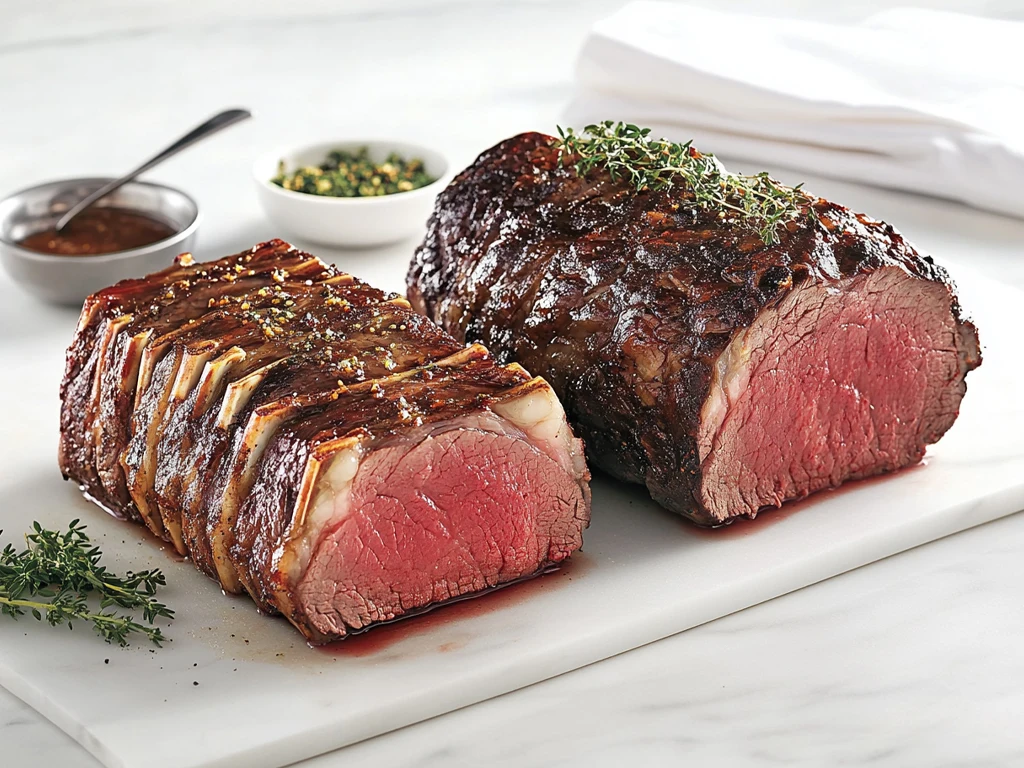
The versatility of the 500 rule makes it adaptable for various cuts of prime rib, but achieving perfect results requires minor adjustments based on the specific characteristics of the cut. Understanding the differences between bone-in and boneless prime rib and how weight affects cooking times is essential for mastering this method.
Bone-In vs. Boneless Prime Rib
The choice between bone-in and boneless prime rib significantly influences the cooking process. Each option has unique characteristics that can affect cooking times, flavor, and overall presentation.
- Bone-In Prime Rib: This cut includes the rib bones, which act as natural insulators, slowing down the cooking process and promoting even heat distribution. The bones also enhance the meat’s flavor during cooking, creating a richer and more robust taste. Bone-in cuts are often preferred for their dramatic presentation, making them a centerpiece-worthy choice for special occasions.
- Boneless Prime Rib: Without the rib bones, this cut cooks more quickly and evenly, making it a practical option for home cooks. It is easier to carve and serves neatly sliced portions. However, boneless cuts may require additional attention to prevent overcooking, as they lack the insulating effect of the bones.
When using the 500 rule, adjust the cooking time slightly for bone-in roasts, as the bones may require a few extra minutes of cooking. For boneless roasts, precise weight measurement and timing are critical to avoid overcooking.
Cooking Time Variations Based on Weight
The success of the 500 rule hinges on accurate cooking time calculations based on the weight of the prime rib. Here’s how to adapt the method for different weights:
- Under 5 Pounds: For smaller roasts, reduce the resting time in the oven slightly, as they cook faster due to their reduced mass. Monitor the internal temperature closely to avoid overcooking.
- 5-8 Pounds: This is the ideal size range for the 500 rule, allowing the method to work effectively without significant adjustments. Follow the standard formula of 5 minutes per pound for cooking at 500 degrees Fahrenheit, then rest in the oven for two hours.
- Over 8 Pounds: Larger roasts retain heat for longer, so they may require a slightly extended resting period in the oven. Consider adding an extra 15-20 minutes of residual cooking time for optimal doneness.
Use a reliable meat thermometer to check the internal temperature, aiming for 130-135°F for medium-rare. Remember that carryover cooking will continue to raise the temperature slightly after removing the roast from the oven.
By tailoring the 500 rule to accommodate different cuts and sizes, you can achieve consistently delicious results that highlight the unique qualities of your chosen prime rib.
Pros and Cons of the 500 Rule
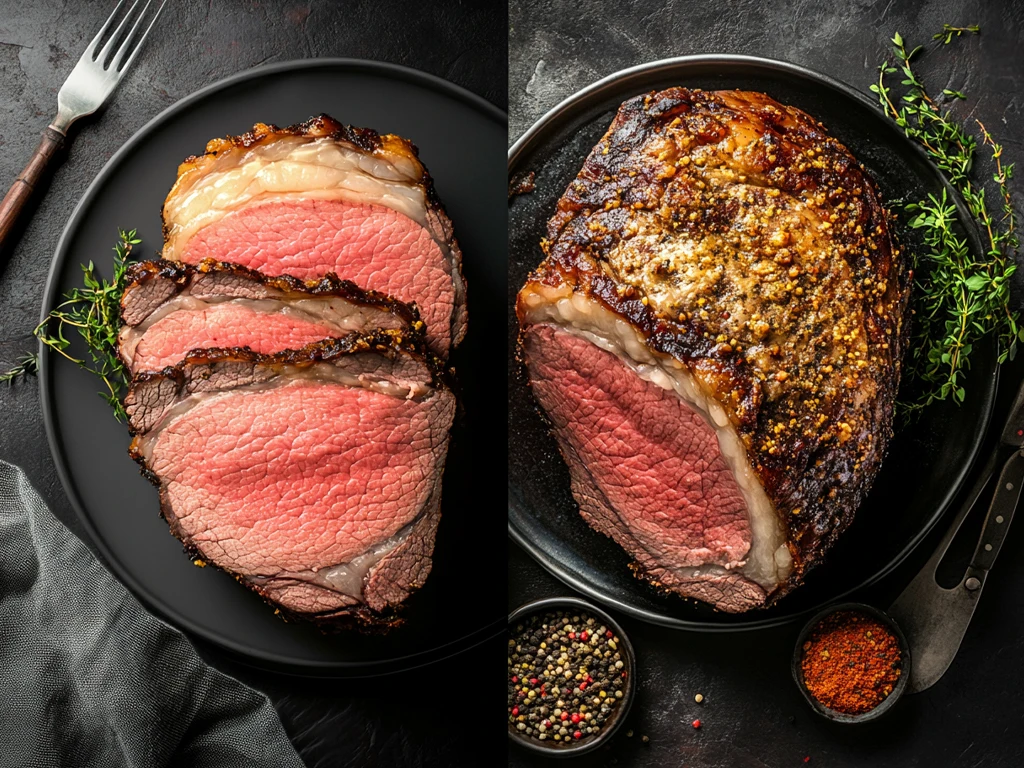
The 500 rule has earned a reputation as a reliable and straightforward method for cooking prime rib. However, like any cooking technique, it comes with its own set of advantages and limitations. Understanding these will help you decide if this method is the best fit for your needs.
Advantages of Using High-Heat Cooking
The 500 rule’s reliance on high-heat cooking offers several notable benefits, particularly for home cooks seeking an efficient way to prepare a flavorful and tender prime rib:
- Simplified Cooking Process: The 500 rule eliminates the need for frequent temperature adjustments or constant monitoring. Once the cooking time is calculated and the oven is set, the process becomes hands-off, allowing for multitasking or entertaining guests.
- Even Doneness: By leveraging the oven’s residual heat, the 500 rule ensures that the roast cooks evenly from edge to center. This technique minimizes the risk of overcooking the exterior while undercooking the interior, a common challenge with traditional methods.
- Perfect Crust Formation: The initial blast of 500-degree heat creates a beautifully caramelized crust on the roast, enhancing its visual appeal and flavor through the Maillard reaction.
- Time Efficiency: Compared to low-and-slow methods, the 500 rule significantly reduces the active cooking time. While the resting period in the oven is lengthy, it doesn’t require any intervention, making the method convenient.
- Consistent Results: The straightforward nature of the 500 rule makes it a dependable technique, even for novice cooks. With proper adherence to timing and temperature guidelines, achieving restaurant-quality results is within reach.
Potential Drawbacks and Limitations
While the 500 rule has many strengths, it’s not without its challenges. Being aware of these limitations can help mitigate potential issues:
- Dependence on Oven Performance: This method relies heavily on the oven’s ability to maintain consistent heat. Older or less insulated ovens may lose heat rapidly during the resting period, compromising the final result.
- Limited Flexibility: The 500 rule is designed for prime rib and may not translate well to other cuts of meat. Attempting to use this method for leaner or less marbled cuts could result in dry or overcooked outcomes.
- Requires Precise Weight Measurement: Accurate cooking time calculations hinge on knowing the exact weight of the roast. Estimating the weight can lead to undercooked or overcooked results.
- Potential for Smoke or Spattering: Cooking at 500 degrees Fahrenheit can generate smoke or cause fat to spatter, especially if the roasting pan isn’t properly prepared. This can lead to a smoky kitchen or extra cleanup.
- Resting Period Challenges: The two-hour resting period in the oven requires strict discipline to avoid opening the oven door. Any heat loss during this time can disrupt the cooking process and affect the roast’s doneness.
By weighing the pros and cons, you can better determine if the 500 rule aligns with your culinary goals and kitchen setup. For many, the advantages far outweigh the drawbacks, making this method a go-to for preparing a perfect prime rib.
Frequently Asked Questions
How long do you cook a boneless prime rib?
For a boneless prime rib, the 500 rule remains straightforward. Cook the roast at 500 degrees Fahrenheit for 5 minutes per pound of weight. For example, a 6-pound boneless roast requires 30 minutes of initial cooking time. After that, turn off the oven and let the roast sit for two hours without opening the door. This method ensures even cooking and a tender, flavorful prime rib. Learn more
Is boneless prime rib roast the same as prime rib?
Yes, a boneless prime rib roast is the same cut as prime rib, but it’s prepared without the rib bones. While the flavor and tenderness are nearly identical, the key difference lies in cooking time and presentation. Bone-in cuts take slightly longer to cook and often deliver a richer flavor due to the bones’ insulating effect. Boneless roasts are easier to carve and serve, making them a practical choice for many home cooks. Learn more
What is the ideal internal temperature for prime rib?
For a medium-rare prime rib, aim for an internal temperature of 130-135°F. Use a meat thermometer to check the roast’s temperature in the thickest part, ensuring accurate results. Remember that the temperature will rise slightly during the resting period due to carryover cooking.
Can I use the 500 rule with other meats?
While the 500 rule is specifically designed for prime rib, it can be adapted for other well-marbled cuts of beef. However, leaner meats like pork or poultry may not retain their moisture with this method and could dry out. It’s best to use techniques tailored to the specific cut you’re preparing.
Why can’t I open the oven during the resting period?
Opening the oven during the two-hour resting period causes heat loss, which disrupts the residual cooking process. This can result in uneven doneness and compromise the roast’s texture. To achieve the best results, resist the temptation to peek and let the method work its magic.
Do I need to sear the roast before using the 500 rule?
No, the high-heat cooking phase at 500 degrees effectively sears the roast, creating a flavorful crust through the Maillard reaction. There’s no need for an additional searing step when using this method.
Conclusion
The 500 rule for prime rib is a tried-and-true technique that brings simplicity and reliability to cooking this show-stopping dish. By combining high-heat cooking with residual heat, the method delivers tender, juicy, and evenly cooked results that rival professional kitchens.
This method shines for its accessibility, making it ideal for both novice and experienced cooks. Whether you prefer a bone-in cut for its flavor and presentation or a boneless roast for ease of serving, the 500 rule adapts to your needs with minor adjustments. While the method requires discipline—particularly during the resting period—its rewards are undeniable.
As you experiment with the 500 rule, you’ll discover that it’s not just about cooking a prime rib; it’s about mastering a culinary technique that transforms a meal into a memorable experience. So, gather your ingredients, preheat your oven, and let the 500 rule guide you to prime rib perfection. Bon appétit!

